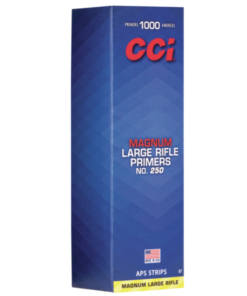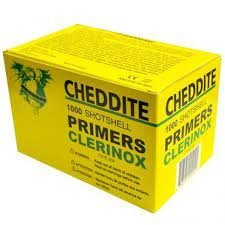Federal Large Pistol Primers #150 Box of 1000
$94.99
Federal #150 Large Pistol Primers (1000)
WARNING: This product can expose you to Lead, which is known to the State of California to cause cancer and birth defects or other reproductive harm. For more information go to – www.P65Warnings.ca.gov.
Federal Large Pistol Primers
Federal Large Pistol Primers are essential components for reloading ammunition for large pistol calibers. These primers are manufactured by Federal Premium Ammunition, a renowned brand known for its quality and consistency. Federal Large Pistol Primers are designed to provide reliable ignition in pistols chambered for large cartridges, such as .44 Magnum, .45 ACP, and .454 Casull. These primers are engineered to deliver consistent performance, ensuring proper ignition for each round. Whether for target shooting, competition, or personal defense, Federal Large Pistol Primers are trusted by reloaders for their reliability and quality.
What is a Primer?
The primer is an essential component of centerfire cartridges. It is in charge of lighting the powder charge located in the cartridge’s case head.
Four fundamental elements make up primers. These parts work together with the gun’s firing mechanism to initiate the series of events necessary to fire a self-contained cartridge. The primer’s role is to ignite all of the propellant in the cartridge at once. This enables reliable ignition.
To do this, the ignition compound must penetrate the propellant completely. It does this rather than only sparking the powder at the cartridge’s flash holes. It’s completed in 1,500 microseconds, or one millionth of a second.
Types of Primers
There are several types of primers available in the market, each with its unique characteristics, advantages, and disadvantages. Understanding the different types of firearm primers is essential for shooters who want to choose the best primer for their firearms. They include:
Pistol
In a pistol cartridge, the pistol primer is intended to function most effectively. The cup’s dimensions are identical to those of firearms from the outside. However, it often has a thinner wall thickness.
Why does that matter? The enormous pressures that a centerfire rifle can generate are not intended for pistol primers. Due to their thinner construction.
In addition, they are also simpler to ignite. This may be useful when using light-firing pin strikes in rifles.
Rifle
Comparatively, the rifle primer’s cup is thicker than the pistol primer. This is because rifle cartridges have higher pressures. Rifle primers can load in pistol casings with the same primer pocket size and vice versa. They achieve this with hardly any noticeable changes.
Magnum Primers
Magnum Primers are available in the aforementioned rifle, pistol, small, and big shapes and sizes.
Magnum cartridges frequently include enormous quantities of slow-burning, difficult-to-ignite powder. The magnum primer mitigates this by igniting with a greater amount of fire. As a result, pressure increases. Again, before using magnum primers in your usual loads, study your reloading manual.
Match and Benchrest
If you don’t think of the word’s “match” or “benchrest” when you think of precision, you probably don’t know what they mean. The Benchrest community constantly strives to improve accuracy, and their reloads depend on these primers. You need consistency to acquire accuracy.
High quality control standards are necessary to ensure uniformity in manufacturing. Primer for use in matches and benchrests is subjected to more rigorous testing and quality assurance. This offers you a more reliable product.
They are identical to the other varieties mentioned in terms of composition. Therefore, they can be mixed and matched without restriction as long as they are of the same size and type.
Shotgun Primers
Shotgun primers are not interchangeable and have a different design from rifle and pistol primers. Similar to boxer primers, shotgun primers are built with an integrated anvil.
They are divided into two primary groups: Hot and Mild. When reloading shotgun shells, the majority of individuals never require anything more than moderate. Because of how they are made, shotgun primers are frequently utilized in inline muzzleloaders.
Primer Composition
Let’s explore the different types of firearm primer components, their functions, and the impact they have on the overall performance of a firearm. Whether you’re a seasoned shooter or just getting started, understanding the role of the primer is crucial for any firearms enthusiast.
Primers consist of four main parts:
Cup
This is the exterior “shell” that you can see at a cartridge’s base. It serves as somewhat of a container for the other priming elements. The thickness of cups varies from manufacturer to manufacturer, often leading to what is known as a “hard primer.”
They can be classified as large or tiny primers based on their size. Copper, nickel-plated copper, brass, copper alloys, cupronickel, and occasionally zinc-coated steel have all been used to make cups.
Priming Mixture
The priming chemical is located inside the cup. Rifle primers are distinguished from pistol and magnum primers by this. The burn rates of various priming mixtures can be hotter or longer.
Anvil
The purpose of the anvil is to reliably explode the priming compound by offering enough resistance to the firing pin during the firing cycle. Even though it functions the same in both kinds of primers. The anvil is incorporated into the primer in the Boxer style whereas it is utilized by the brass or steel casing in the Berdan.
Pick up one of the used primers that are probably lying on the floor next time you are at your reloading table. The anvi is the tiny flat, three-winged object visible on top.
Foil Cover
The foil cover is positioned between the priming compound and the anvil and resembles a drop of lacquer. Its duty is to guard against contamination of the priming ingredient.
How Primers Works
A primer works by igniting the gunpowder in a cartridge when struck by the firing pin in a firearm. The primer contains a small amount of a highly sensitive and flammable chemical mixture that is designed to ignite when compressed by the impact of the firing pin.
The primer’s located in the center of the base of the cartridge case. It’s covered by a thin metal cap (the anvil) that’s designed to provide a stable surface for the primer to be struck against.
When the firing pin strikes the primer, it crushes the sensitive mixture and ignites it. This produces a small flash of flame that in turn ignites the gunpowder in the cartridge. The rapidly expanding gases produced by the ignition of the gunpowder propel the bullet down the barrel of the firearm, providing the energy needed to fire the round.
Small Pistol Primers vs Large Pistol Primers
Reloading your ammunition for your 45 ACP firearm can be a cost-effective and satisfying hobby, but it is important to choose the right components, including the primer, to ensure consistent performance and reliability.
When choosing between small pistol primers and large pistol primers for your 45 ACP reloads, there are several factors to consider.
Load Type and Pressure
The first factor to consider is the type of load and the associated pressure. If you are reloading lighter loads with lower pressure, small pistol primers are the preferred choice, as they are less sensitive to variations in pressure and temperature and provide more consistent ignition properties.
If you are reloading heavier loads with higher pressure, large pistol primers are recommended, as they provide more consistent ignition and better performance in adverse conditions.
Primer Sensitivity
Small pistol primers are less sensitive to impact, making them ideal for lighter loads, where the risk of accidental ignition is minimal. Large pistol primers are more sensitive to impact, providing more consistent ignition and better performance in adverse conditions, but they also require more force to ignite.
Ignition Properties
Small pistol primers are designed to ignite with less force, providing more consistent ignition properties, but they may not be as consistent in adverse conditions. Large pistol primers are designed to provide consistent ignition properties, regardless of variations in pressure and temperature, but they also require more force to ignite.
Reloading Equipment
The type of reloading equipment you use can also affect the choice of primer. Some reloading presses may have trouble striking large pistol primers, so it is important to check the manufacturer’s recommendations and your equipment capabilities before making a decision.
Pistol Primers FAQs
Below are some of the frequently asked questions about primers to help clarify misconceptions. This provides you with a better understanding of this crucial component.
What is the Best Primer Size for a Specific Cartridge?
The best primer size for a specific cartridge depends on the type of firearm, the specific loading recipe, and the intended use of the ammunition. It’s important to use the correct primer size recommended for the specific load and not to mix and match primer sizes without testing for safe and reliable function.
Can You Use Small Pistol Primers in a Large Primer Pocket?
No, it is not recommended to use small pistol primers in a large primer pocket or vice versa. Mixing and matching primer sizes can result in unsafe and unreliable ignition properties and should be avoided.
Can You Reuse Pistol Primers?
No, pistol primers are single-use components and should not be reused. Reusing primers can result in unsafe and unreliable ignition properties and should be avoided.
What is the Shelf Life of Pistol Primers?
The shelf life of pistol primers varies by manufacturer, but they typically have a shelf life of 5 to 10 years if stored in a cool, dry place. It is important to periodically check the freshness of your primer stock and replace any that are outdated.
| Weight | 1.67 lbs |
|---|---|
| Dimensions | 1 × 1 × 1 in |
| Brand | Federal Premium |
| Type | Pistol |
| Product Model | #150 |
| Quantity | 1000 |
| Hazmat Class | UN0044 |
Reviews
There are no reviews yet.
Related products
Primers
















Be the first to review “Federal Large Pistol Primers #150 Box of 1000”